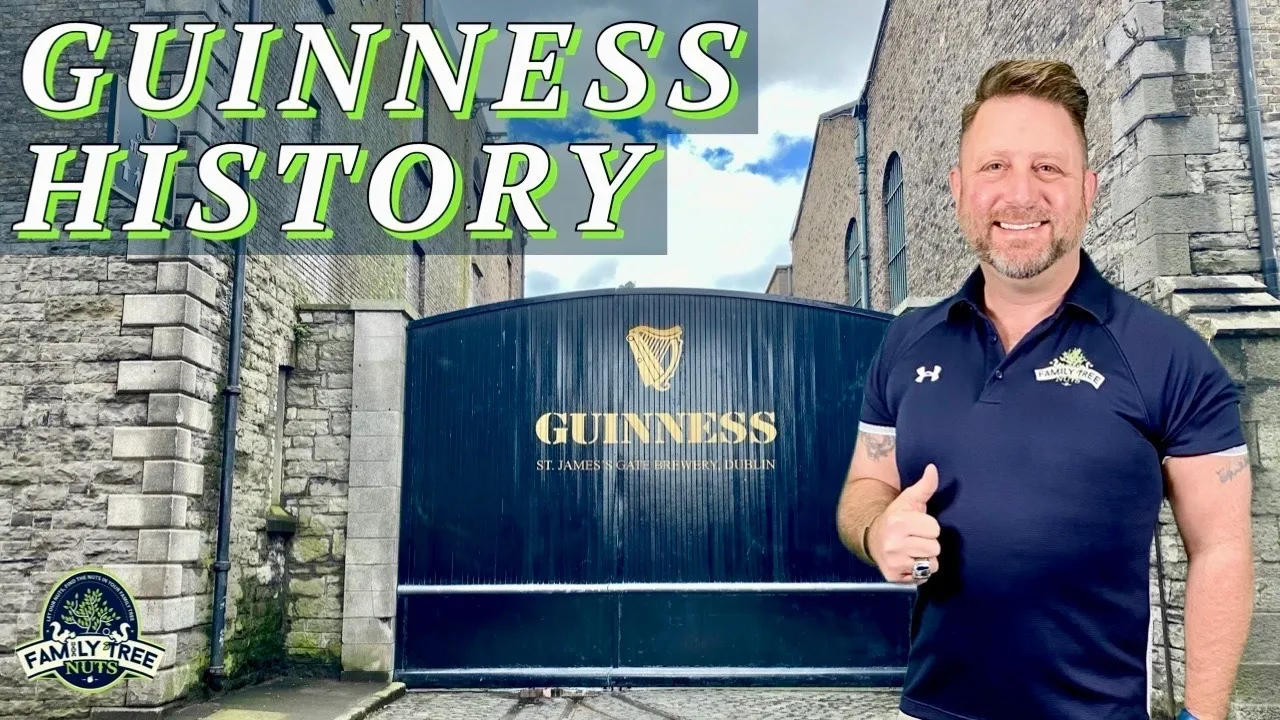
GUINNESS HISTORY & TOUR! DUBLIN, IRELAND!
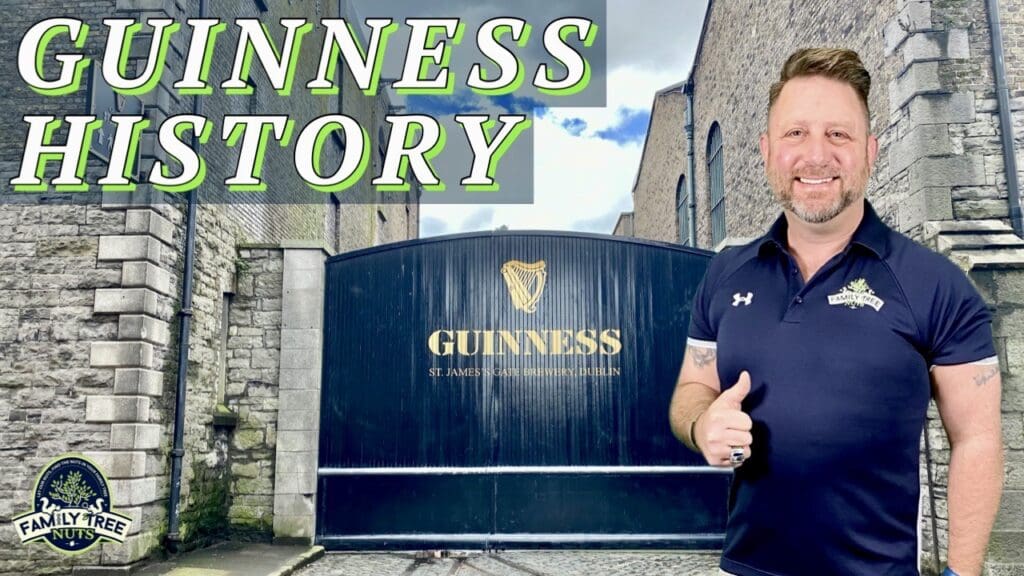
Ah, Guinness, that dark, bold beer that most either really love or really hate. It is a symbol of Ireland that many will even judge your “Irishness” by if you like it or not. Guinness is one of the most recognized brands in the world and is certainly one of the main things that we think of when we think of the Emerald Isle, but what is the Guinness story? How did it come about? In this article, we will start out telling the history of Guinness, and major events in its past. Then we will tell you the sights from The Guinness Storehouse, in Dublin, Ireland, which is one of my favorite places that I’ve visited in all of my global travels. So, let’s dive into the pint glass and find out what all the fuss is about.
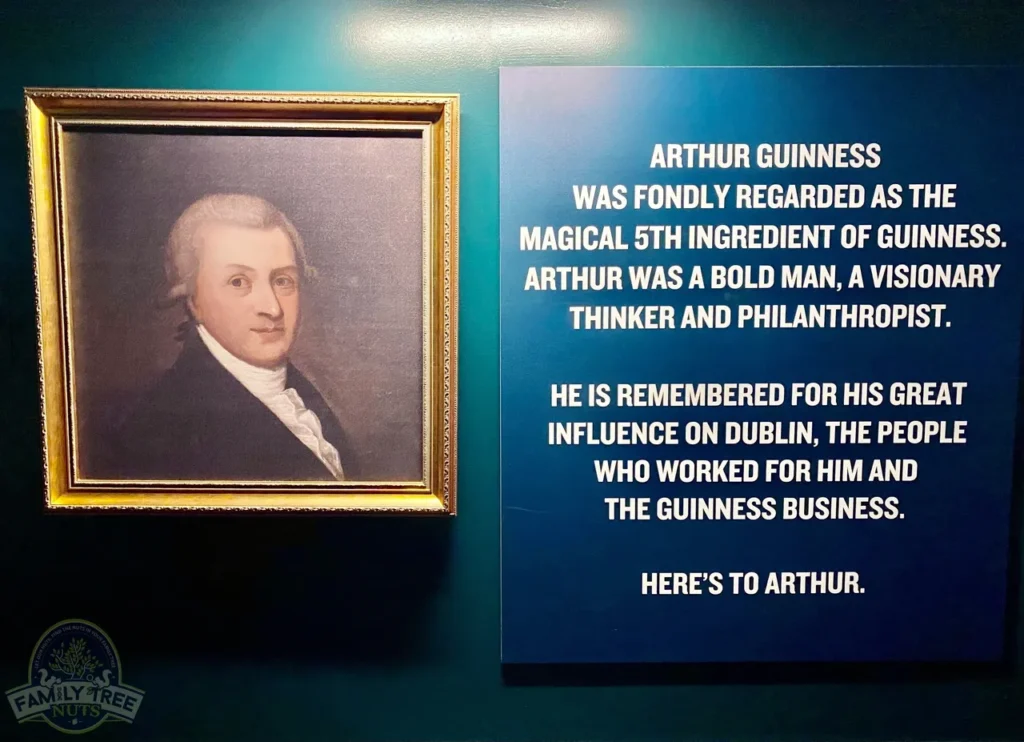
This article is a bit different than most of the ones that we do at Family Tree Nuts. We are a history company, why are we talking about beer? Well a huge percentage of us claim Irish heritage, and pretty much all of us do on March 17th. Why not tell the story of one of the biggest things associated with our island? If you are reading this article because of your interest in beer, we invite you to check out our YouTube channel which if full of hundreds of history videos from all over the country, and like this one, a few other countries.
The Guinness story starts with the birth of its creator, Arthur Guinness, who was born in 1725 in Celbridge, County Kildare, Ireland. Arthur was born into the world with humble beginnings. His father Richard Guinness was a land steward for Reverend Arthur Price, and Price was Arthur’s godfather, whom he was named after. Richard brewed beer for the workers on Price’s estate and taught his son Arthur the craft. Price eventually became the Archbishop of Cashel and in 1752 he passed away. Archbishop Price left Richard and Arthur one hundred pounds each and Arthur used his money to set up his first brewery in Leixlip, County Kildare, Ireland, which is on the Upper River Liffey about 10 and a half miles from Dublin.
With some success, Arthur left his brewery in the hands of his brother Richard and decided to try his luck in Dublin. It was on December 31, 1759, he signed a 9,000-year lease with the city for 45 pounds a year, on a small, run down brewery at St. James’s Gate, that had been vacant for ten years, and he began to brew his ale. The location for the brewery was brilliant. It had access to good fresh water from the Rivers Dodder and Poddle, which also helped in bringing in fresh ingredients from the countryside. The brewery grew slowly in the beginning but ten years from its start, in 1769, Guinness shipped six and a half barrels of beer to England. This was their first export and a sign of great things to come.
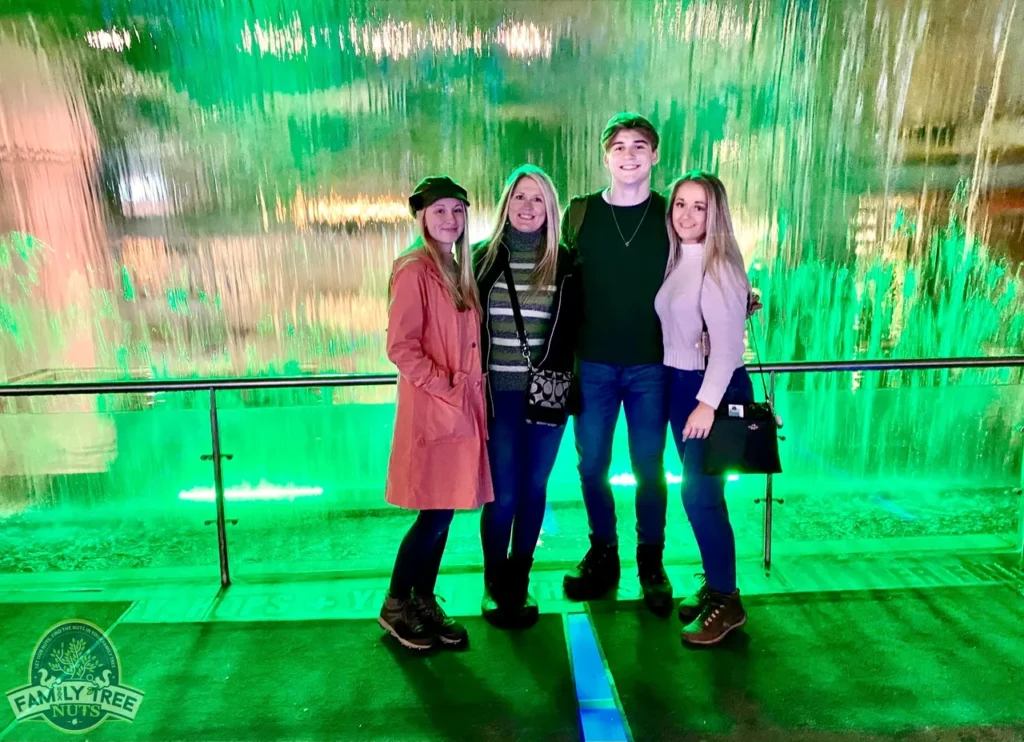
A challenge arose in 1775 when the Corporation of Dublin accused Guinness of taking too much of their fair share of the water supply. Free water was part of the 9,000-year lease and Guinness was ready to defend his rights. The sheriff arrived to shut off the water supply, he was confronted by the employees and Arthur himself with a pick ax in hand! Arthur Guinness was not a push over of a man. The battle over the water lasted a decade before it was settled.
In the late 1700s, dark beer from London had become popular with Dublin’s working class. They called the new beer Porter, because it was popular with the city’s river and street porters. In 1799, Arthur Guinness took the risk to begin to produce the strong, dark beer. In 1801, Guinness brewed his first batch of West India Porter, which became the formula that we are all used to today. In 1803, Arthur Guinness past away at the age of 78, and his estate was an astounding fortune of 23,000 pounds. As was his wish, his son Arthur Guinness II took the reins of the company.
The first reported shipment of Guinness to the New World was on October 16, 1817, when 8 barrels were sent to John Heavy in South Carolina. In 1821, exact instructions were written down and the system for making the brews streamlined. The next change of guard was in 1850, when Sir Benjamin Lee Guinness took over the business from his father Arthur Guinness II. In the 1850s Guinness had begun to be shipped all over the globe and by 1858, the black beer was being shipped all the way to New Zealand. When Prince Albert died in 1861, a bar in London decided that the champagne they served should represent the city’s mournfulness, so he added Guinness to the champagne and called it, Black Velvet”. The Guinness trademark containing the harp symbol, Arthur Guinness’ signature and the Guinness name was released in 1862. Benjamin Guinness also spearheaded the renovations of the Saint Patrick’s Cathedral, in Dublin, which had fallen into disrepair. Benjamin said that he would fund the restorations as long has he had a free hand in the design. The restorations took place between 1860 and 1865. Benjamin’s sons continued to donate money to the cathedral which funded the tiles, and a stained-glass window. To this day the Guinness family are generous supporters of St. Patrick’s Cathedral.
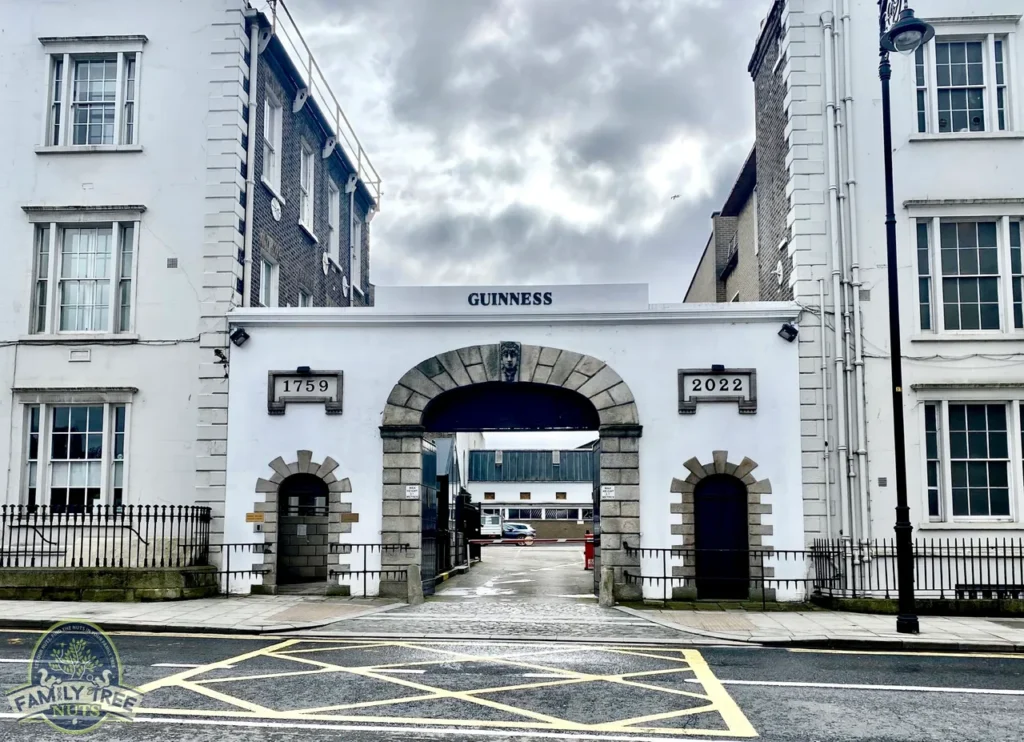
One of the most recognized images of Guinness is its Irish harp. In 1862 Benjamin Guinness chose the harp to be the company’s emblem and he trademarked it. The harp emblem was based off the medieval Brian Boru harp that is now housed in the Long Room at Dublin’s Trinity College. When Ireland became a sovereign nation in 1922, the Irish harp was chosen as the national emblem. To differentiate between the Guinness harp and the national harp, the sound board is always on the right for the emblem of Ireland and facing to the left on the Guinness emblem.
In 1868, Edward Cecil took over the reins of the company and doubled the size of it. Under his leadership the brewery built its own cooperage, or barrel making shop, railway system, and barley malting. Being able to have these resources saved them tremendous money and spring boarded Guinness to its next level of success. The brewery had its own fire brigade, medical department, internal railway, electrical power station, police force, and cafeterias for the workers and it began to be called, a “city within a city”. They employed around 3,000 people and it was estimated that one in every thirty people in Dublin were financially dependent on the brewery.
In 1873, Guinness acquired land along the River Liffey, which is the main artery of Dublin, and they built their own small pier. Then in 1877, Guinness built a fleet of barges to haul their barrels on the River Liffey. The barges were named after rivers in Ireland. In 1893, the company hired Thomas Bennett Case, an Oxford graduate as a scientist to make innovations to company. Later, in 1901, the company hired chemist, and Oxford graduate, Alexander Forbes-Watson to work in the experimental brewhouse to improve the formulas.
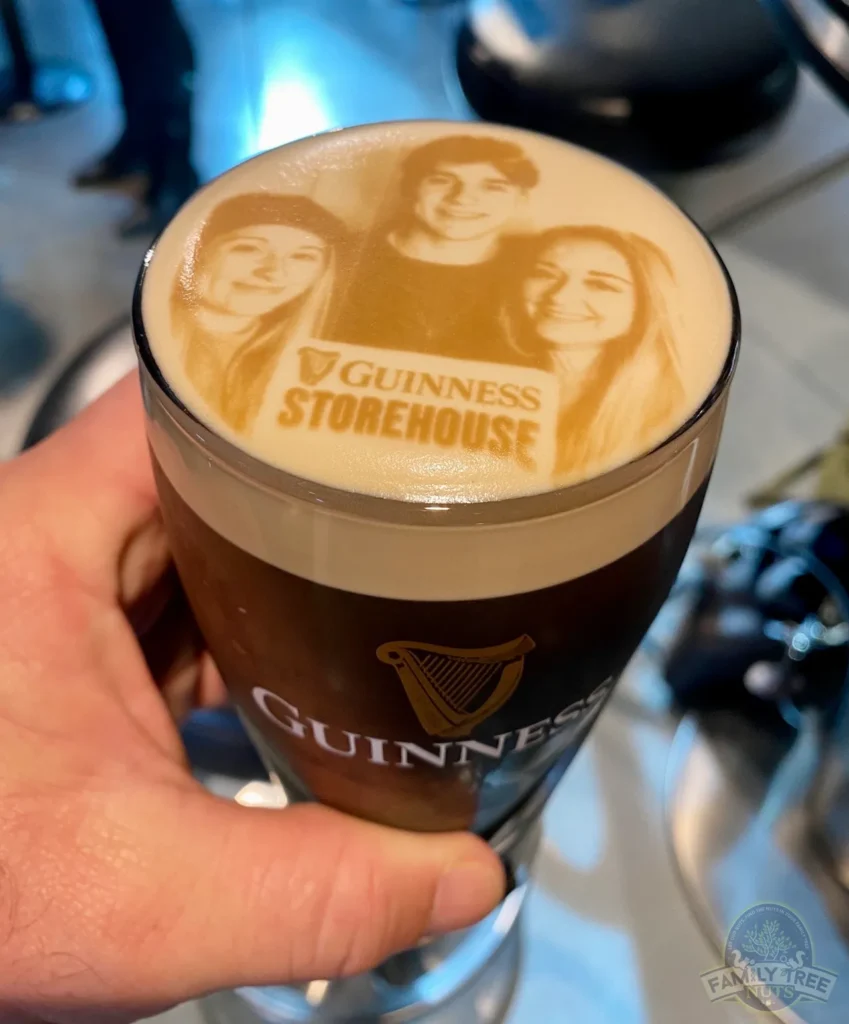
When World War I broke out in 1914, Guinness employees where encouraged to enlist in the British forces. Over 800 employees served and 103 died in the war. While off fighting, the workers were paid half wages, on top of their military pay and were guaranteed their jobs when they returned. Another interesting thing about the employees was that since the beginning, every male employee over the age of 21 was given an allowance of two pints of Guinness per shift. If a man had a physically demanding job, or worked three hours over time, he received an extra pint. In 1970, the workers received their allowances in bottles and that continues to today but they are asked to do their drinking at home.
The company switched leadership again in 1927, when Rupert Guinness, 2nd Lord Iveagh, stepped in as Chairman. The first advertising campaign using the slogan “Guinness is Good for You” rolled out in 1929, and shortly after the slogan “My Goodness, My Guinness”. These advertisements became iconic and used several animals and comical situations. It is also said that many folks received much needed nourishment from the drink. Even today there are many articles claiming the healthy benefits for moderately, I said moderately drinking Guinness.
During WWII, during the 1939 Christmas dinner, all British troops in France received a bottle of Guinness. In the 1950s, Guinness did a few things that will likely perplex the majority of us today. In 1954, the company dropped 50,000 bottles in 11 locations around the world. Inside each bottle, was information about the beer, a number for the bottle, and instructions of how to send it back to Guinness. Those that sent the bottle in were mailed information of where the bottle was originally dropped and a gold leprechaun charm. Then during the 200-year anniversary of the company in 1959, Guinness dropped 150,000 bottles into the Atlantic Ocean, from 38 ships, over a six-week period. Inside each bottle was a certificate from the “Office of King Neptune”, a story of Guinness, a special gold label, and instructions on how to turn the bottle into a lamp. To this day, one or two of the bottles are found each year! Imagine a company doing that today! Imagine Coca-Cola dropping 150,000 Coke bottles into the ocean!
Another interesting tidbit is that before 1939 if an employee wanted to marry a catholic, his resignation was requested, and Guinness did not employ Catholic managers until the 1960s! The Guinness family were devout protestants and if you know a little history about religion in Ireland, you can surely understand this part of the story. In 1963, Guinness opened its first location outside of the British Isles, in Nigeria. It’s now brewed in 50 countries and available in 120. In 1988, Guinness invented it’s rocket widget, that nitrogenates canned Guinness to keep its smooth creamy taste, and in 1991, the invention beat out the internet to win the Queen’s Award for Technological Achievement as the best invention in the previous 40 years. The Irish certainly have their priorities straight!
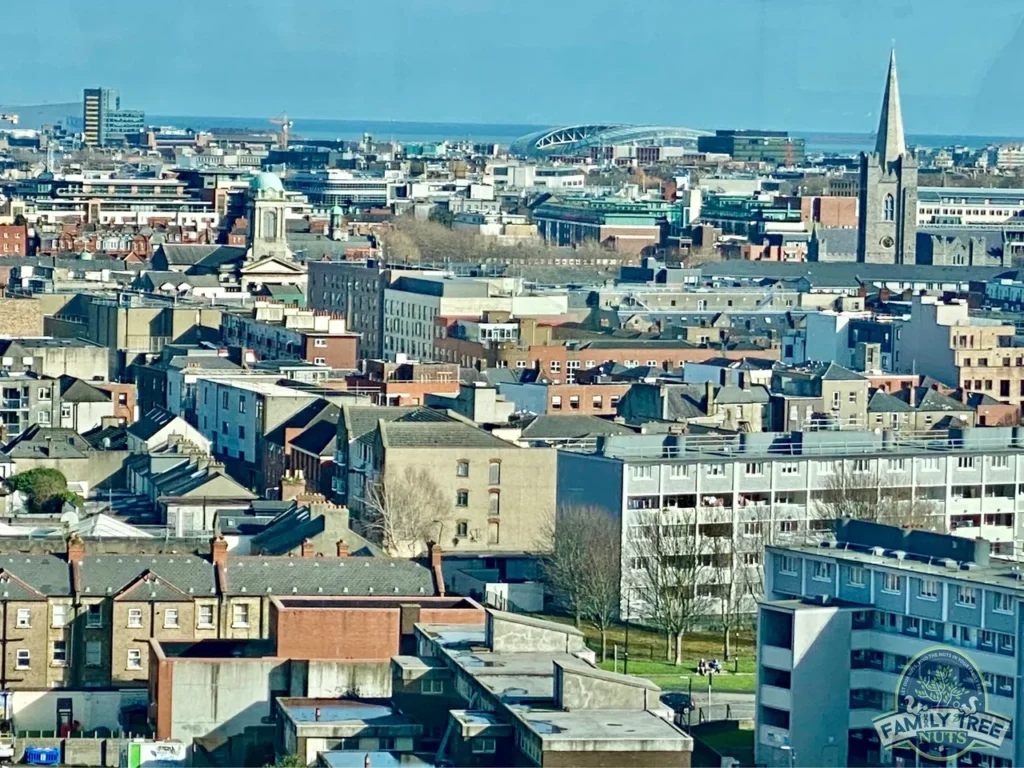
Finally, in the year 2000, the St. James’s Gate Brewery was turned into The Guinness Storehouse, which is a seven-story interactive museum that literally gives you a taste of what Guinness is all about. Let’s go check it out!
The Guinness Storehouse is an amazing place where you can learn until your palates content about the history, the manufacturing, advertising campaigns, and you can experience tastings, and enjoy a 360-degree view of historic Dublin. If you are on foot, you will find several signs along the way to direct you to the storehouse. If you are coming from the north you will find the home of Guinness founder Arthur Guinness. Then follow the signs, as they will lead you to the main entrance, which is usually lined up with horse carriages. Make sure that you have booked your tour online before you arrive, and be ready to show your tickets at the gate just inside the entrance. You will be directed to an escalator and here you get you first glimpse of the seven-floor facility. Even though you will be on a self-guided tour, you will be welcomed and given a run-down of the place on top of Guinness’ 9,000-year lease with the City of Dublin. That’s right, on top of, it is encased in the floor so be sure to have your camera ready. Just to the right you will see a wall showing the many examples of Guinness bottles over the centuries. Also, on this floor is the bathrooms, and the gift shop.
The first exhibit area that you come to is the exhibits of how Guinness is made from four main ingredients, barley, hops, water, and yeast. The green waterfall is perfect for a photo op! Follow the path up the stairs to the next exhibits. Next you come to the story of Arthur Guinness where a video of a bartender will tell you all about the founder that is held in such high regard. The next display that you come to is about the brewing process, which you will find the exhibit very engaging and entertaining. You will also see how the barrels are made. By the way, does anyone know what a bung hole is? Well it’s the hole in a barrel and the stops, made of wood or cork are called a bung. Let’s keep on track here.
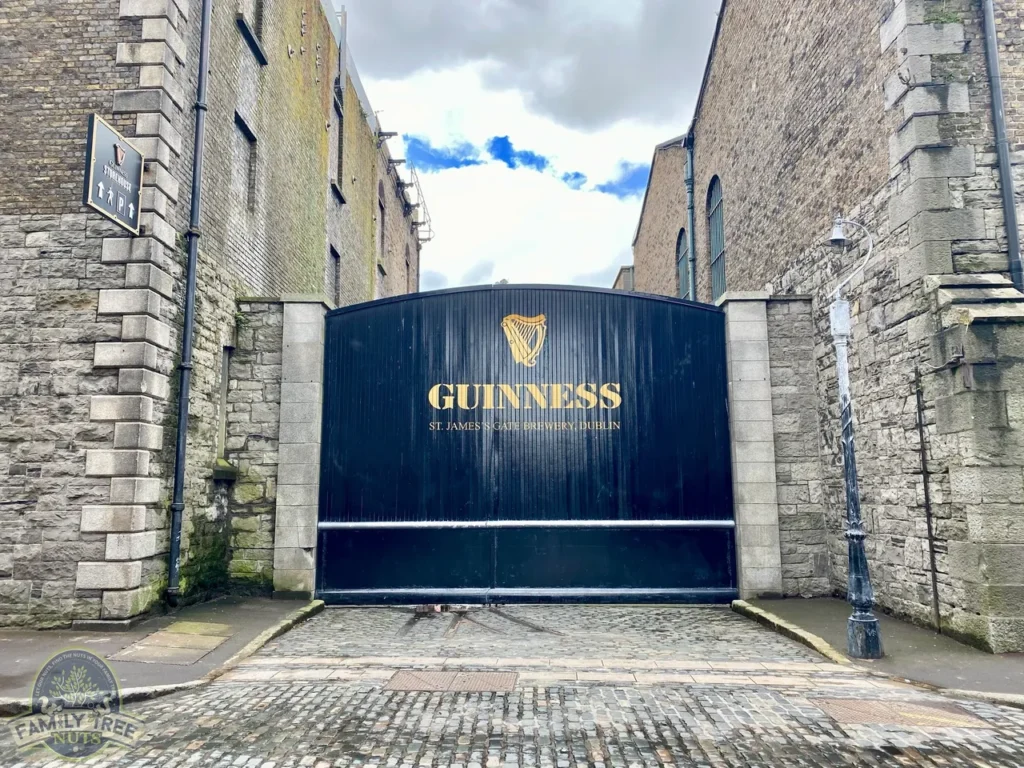
Next you take more escalators up to the other floors. The views here are quite unique and it you are like me, you will want to take it all in. You soon arrive on the floor that holds the nostalgia exhibits of Guinness logo, its brand and marketing. You will see a historic harp, the symbol of both Ireland and of Guinness. You can see displays of many favorite advertising campaigns. Speaking of advertising, some of the advertising campaigns are what millions of people around the globe think of when they think of Guinness, even if they don’t drink alcohol at all. The posters and ads have become a favorite to many and bring back fun memories to so many. Don’t forget to take your picture in one of the nostalgic exhibits. Next you will find yourself at one of the most memorable spots of many Dublin tourists. You can have your image put on a pint of Guinness!
Finally, you will reach the top level which is two circular bars with full glass outer walls with a 360-degree view of Dublin City. The windows have information on them about some of the historic buildings that you are seeing. Here you cash in your second ticket for your pint of Guinness and take in the sights. You will want to make sure that you have some time to spend here. Once you’ve had your eyes and belly’s fill, it’s time to head back down to the gift shop where you can find almost any item that you can imagine with the famous name and logo. When it’s time to go, I highly recommend that you take a carriage ride through the city. When we did this, I told my Clan that our direct ancestors left Ireland as indentured servants but their descendants have returned to tour around Dublin in a carriage. My how far we have come. How far has your clan come? Be sure to leave us a comment about the experiences of your immigrant ancestors and where you are now.
By the way, be sure to see our story about the history and tour of the world’s number one Irish whiskey, Jameson! That article, like this one, is packed with information and has clips from the actual tour guide.
Guinness, whether you love it, hate it, think it is evil, or don’t really care about it one way or another, you can’t deny its impact on the Irish people and Irish culture. The name Guinness is held in high regard in Dublin due to the companies impact of the economy and the giving heart of the Guinness family. It is by far the most consumed drink in Ireland, as well as other countries and because of that you can understand the slogan, “My Goodness, My Guinness”. Be sure to see our video below from the Guinness St. James’ Gate Storehouse.
-Col. Russ Carson, Jr., Founder, Family Tree Nuts
